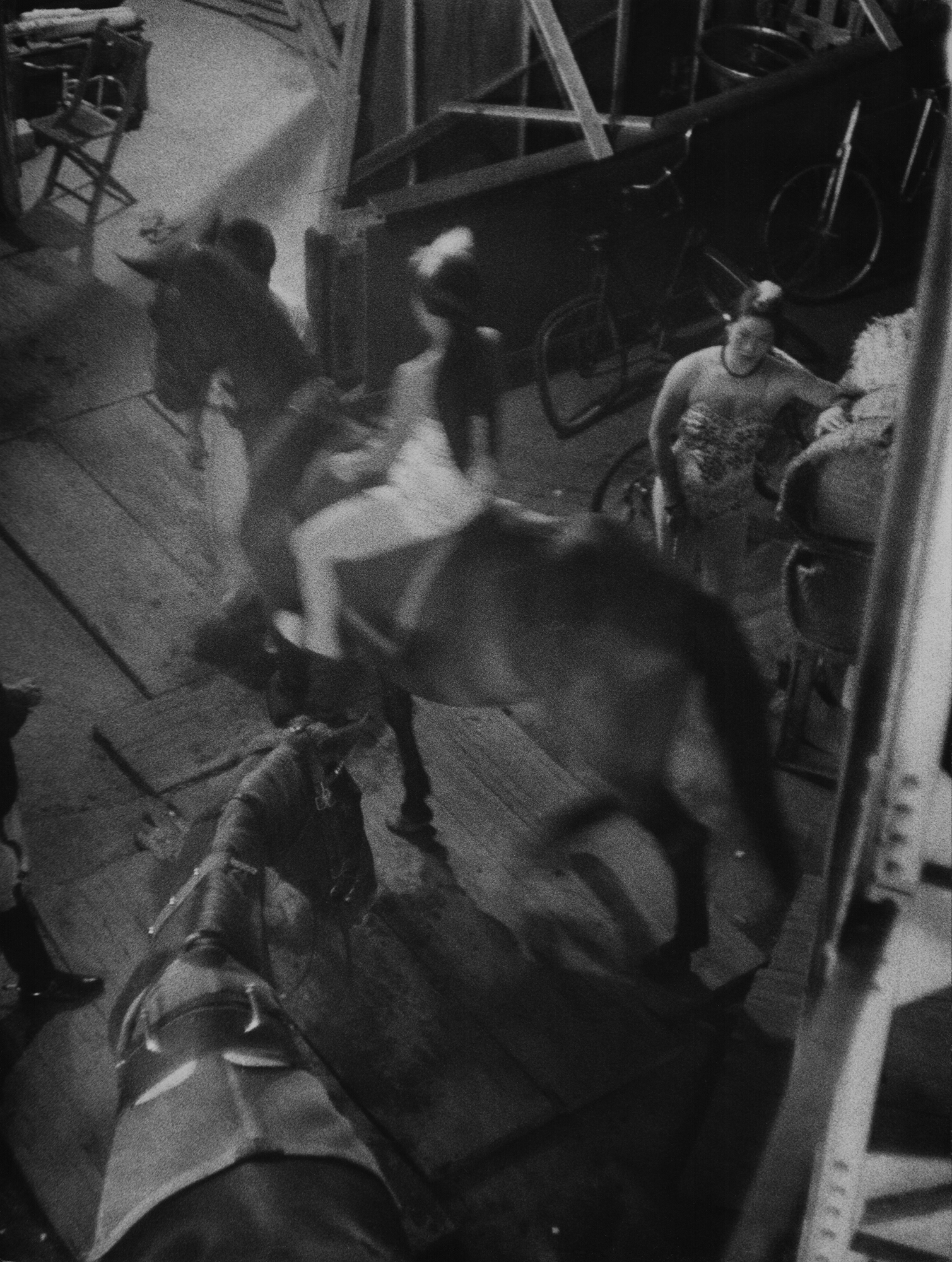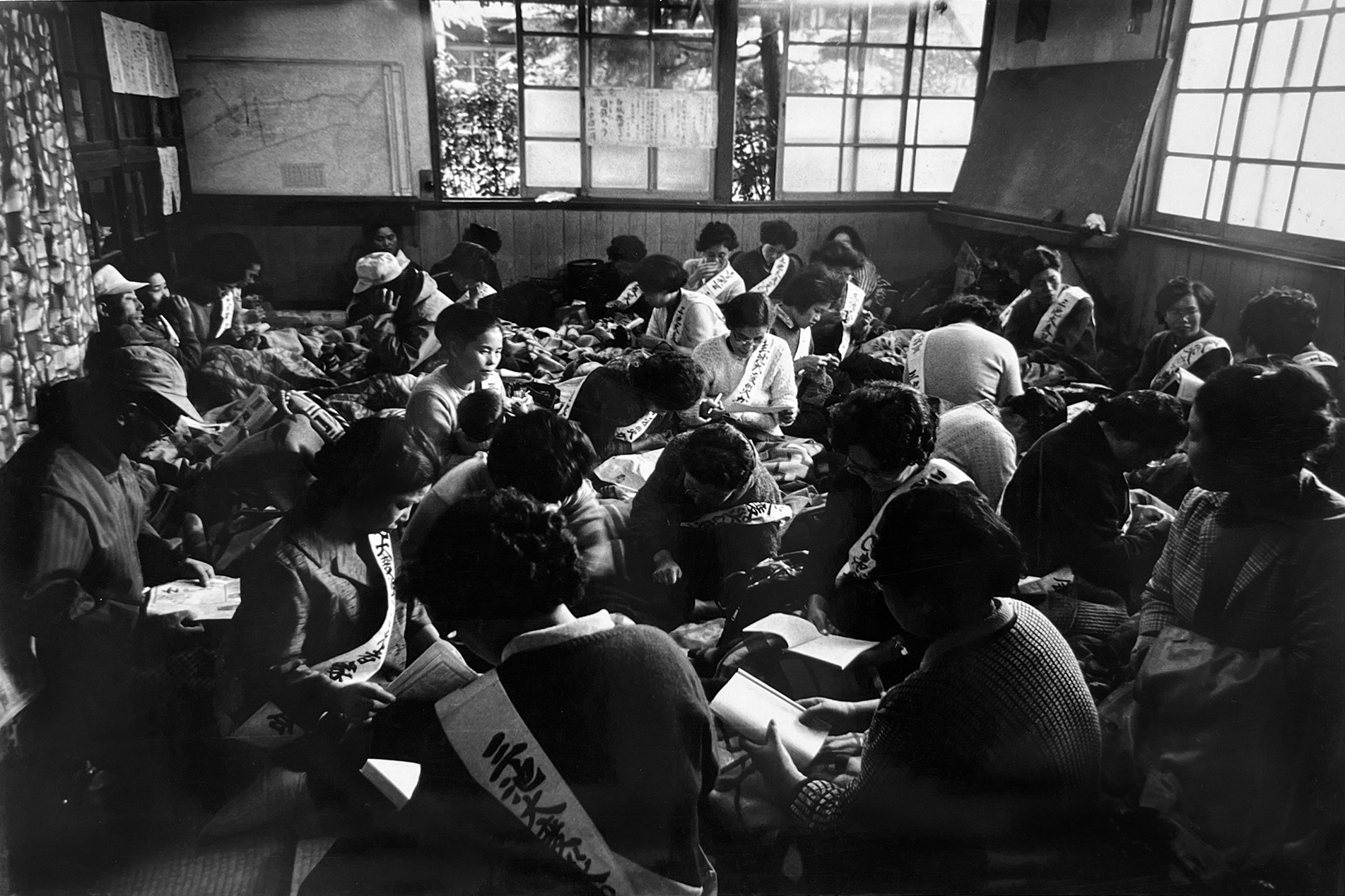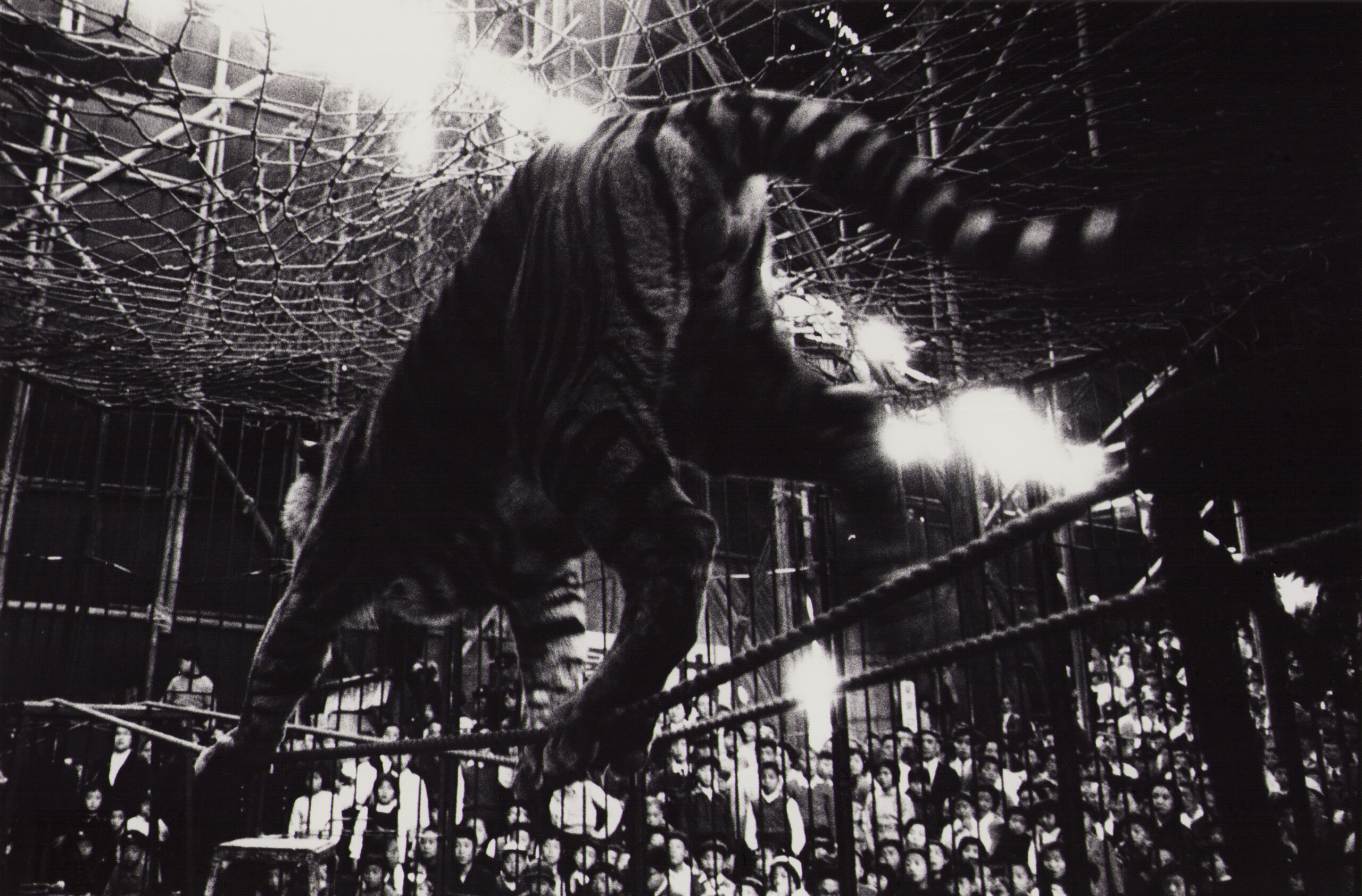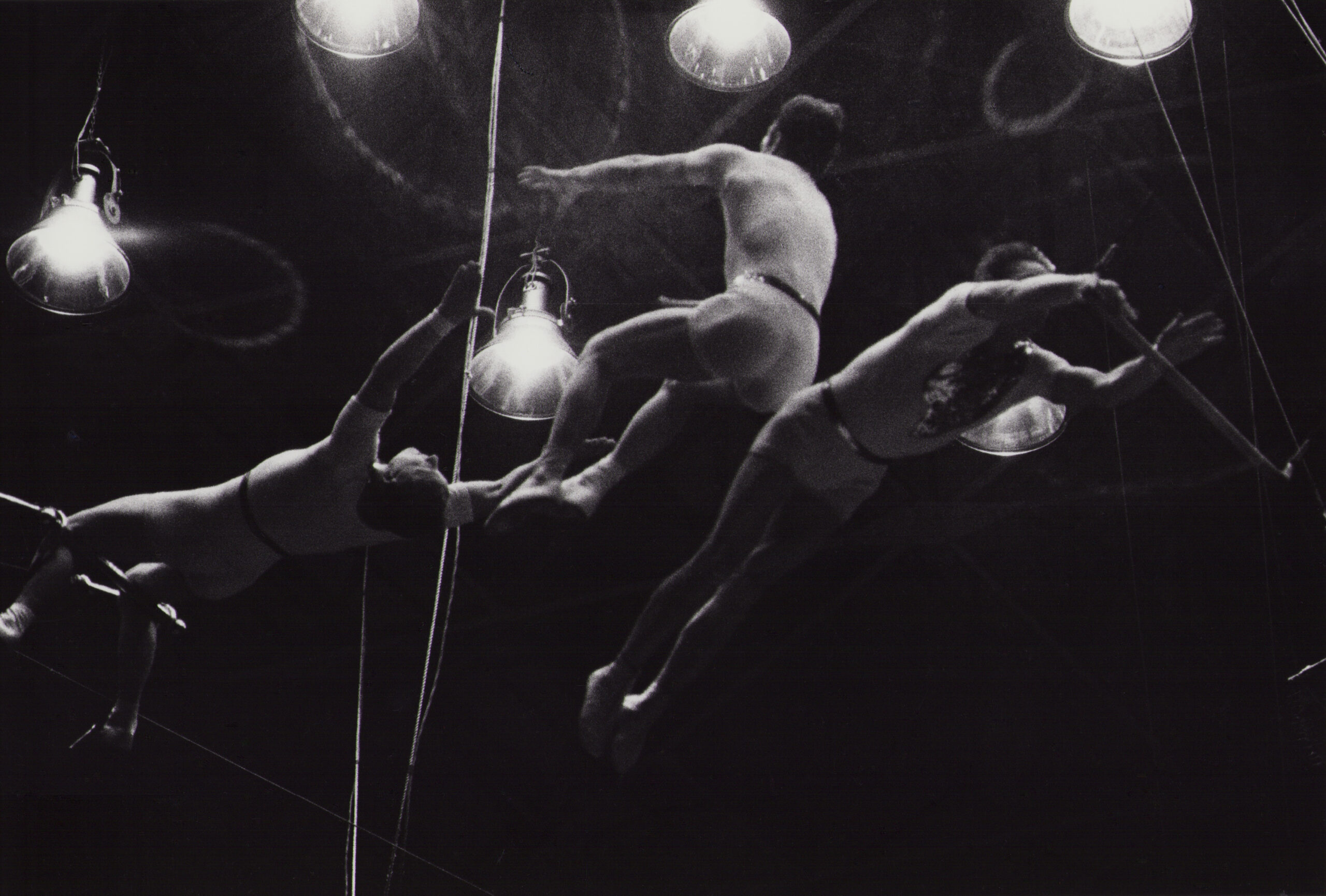
Tanno Akira

Tanno Akira (1925-2015) was an esteemed photographer and member of the influential postwar Japanese photo agency VIVO. In revisiting the long-overlooked works of Okanoue Toshiko and Imai Hisae, members of the same generation, we have been adopting fresh perspectives on the Japanese photography scene up to the 1960s, and aim to reinterpret Tanno in the context of his time.
——-
Tanno first showed Circus in 1957 in the group exhibition Eyes of Ten at Matsuya Ginza, Tokyo, organized by the photo critic Fukushima Tatsuo. Tanno was already highly regarded for his stage photos of foreign musicians and ballet dancers touring Japan, but his Japanese circus images adopted a new direction, conveying a distinctly local atmosphere with a hint of Western influence. This exhibition also brought together future members of VIVO, the seminal independent photographic agency established in 1959, including Hosoe Eikoh, Tomatsu Shomei, Narahara Ikko, and Kawada Kikuji, heralding a new era in postwar photography. Tanno’s mid-1960s series, later titled Heroes of the Underground, focused on workers at the Takashima coal mine in Nagasaki Prefecture, powerfully depicting their grueling labor amid punishing working conditions. Whether the setting was circuses or coal mines, Tanno’s photography consistently presented people’s lives as dramas unfolding on the stage of human existence. In 1972, he became the secretary of the Japan Realist Photographers Association, carrying on the social-realist movement spearheaded by Domon Ken, and in 1976, he founded the public open-call exhibition Shiten (Perspectives), becoming a mentor to emerging photographers. In his role as chairman of the Copyright Committee of the Japan Professional Photographers Society, Tanno also contributed to reform of Japan’s copyright laws in 1970. by TODA Masako, Photography Historian
WORKS
Biography
| 1925 | Born in Tokyo |
|---|---|
| 1947 | Worked in Kinreisha Photography Studio (-1951) |
| 1949 | Graduated from Department of Photography, College of Art, Nihon University |
| 1959 | Co-founded the photographer's self-agency "VIVO" with KAWATA Kikuji, SATO Akira, NARAHARA Ikko, and HOSOE Eikoh (Disbanded in 1961) |
| 1976 | Founded a open call exhibition "Siten (A perspective)" Appointed as a selection committee member |
Selected Solo Exhibition
| 2025 | Heroes under The Ground. Gallery Nii Tokyo, Tokyo |
|---|---|
| 2024 | From the series of "Circus" and "Heroes under The Ground". The Third Gallery Aya, Osaka, Japan |
| 2015 | Circuses in Showa. Zen Photo Gallry, Tokyo, Japan |
| 2013 | Heroes under The Ground ——Nagasaki Takashima Cole Mine. Canon Gallery, Tokyo; Sapporo; Fukuoka, Japan |
| 2009 | Postwar Days of TANNO Akira. Canon Gallery S, Tokyo, Japan |
| 1975 | Mibu Kyogen. Canon Salon, Tokyo, Japan and Nagoya, Japan; Mibudera temple, Kyoto, Japan |
| 1959 | Two Ballerinas: Dame Margot Fonteyn de Arias and Janine Charrat. Gekko Gallery, Tokyo, Japan |
Selected Group Exhibition
| 2024 | SHYARAKUSAI! Japanese Photo Books of the 1950s-1970s. Fujifilm Photo Salon Tokyo, Tokyo, Japan |
|---|---|
| 1991 | Innovation in Japanese Photography in the 1960's. Tokyo Metropolitan Museum of Photography, Tokyo, Japan |
| 1978 | VIVO. Santa Barbara Museum of Art, Santa Barbara, CA |
| 1962 | "NON" Photographic Exhibition. Ginza Matsuya Department Store, Tokyo, Japan |
| 1957 | The 1st "10 Eyes" Exhibition. Konishiroku Photo Gallery, Tokyo, Japan |
| 1952-54 | Youth Photo Exhibition. Matsushima Gallery, Tokyo, Japan |
Art Fair
| 2024 | Paris Photo 2024. Grand Palais, Paris, France. |
|---|
Publication
| 2015 | Showa Kyokubadan. Zen Photo Gallery; Tokyo |
|---|---|
| 2009 | Freedom of Taking Photograph. Hon No Izumi Sha; Tokyo |
| 1995 | The World Ballet in Japan. Image House: |
| 1992 | Mibu Kyogen. Koyo Publishing; Tokyo |
| 1958 | Bolshoi Theatre. Ongaku No Tomo Sha; Tokyo |




